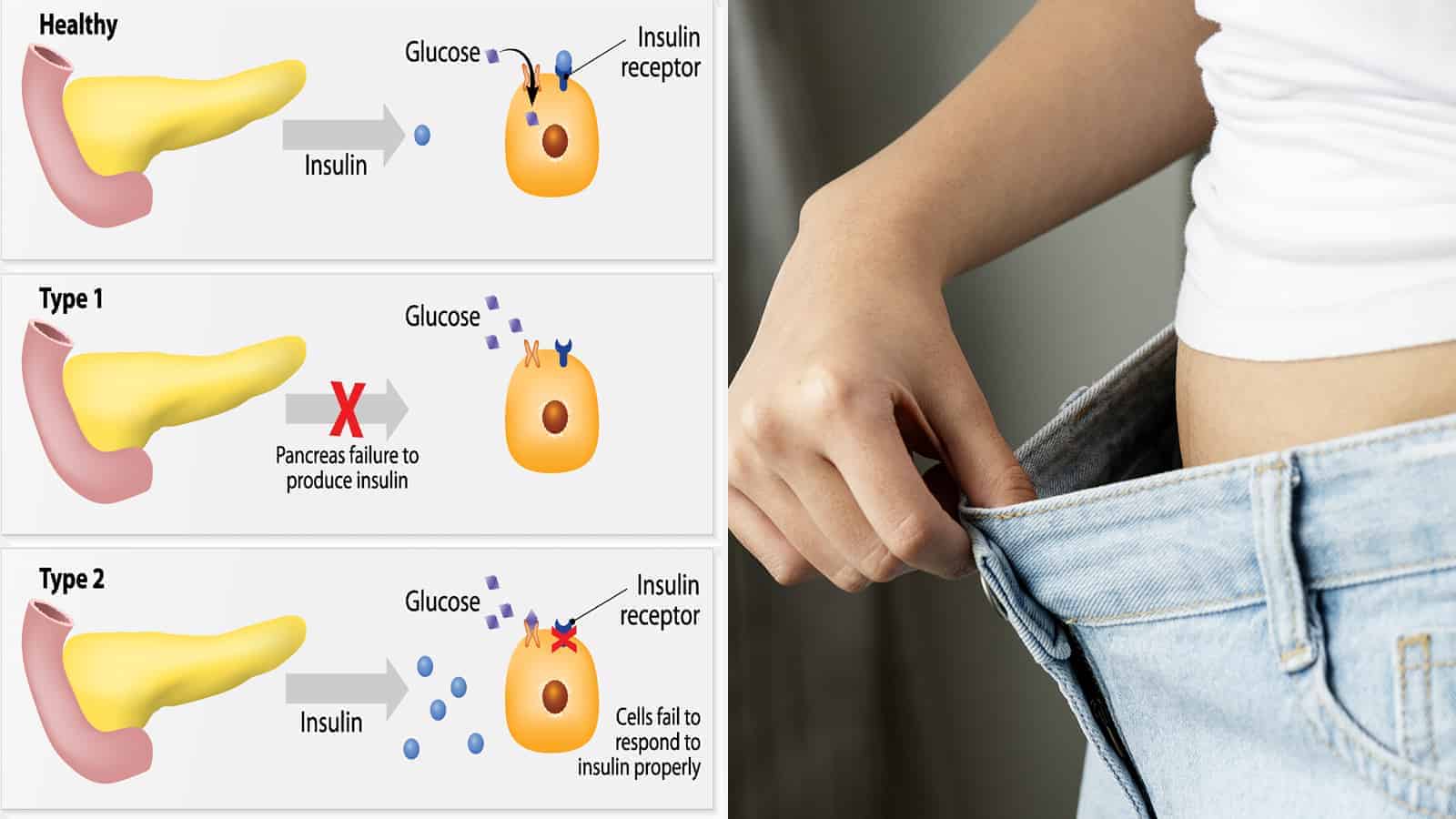Diabetes mellitus is an epidemic in this country that is soaring out of control.
Experts at the CDC believe that more than 34.2 million people are suffering from this condition. To put things into perspective, that’s one out of every ten individuals that have this disease.
To further add to the complications of this condition, around 88 million people in the United States have prediabetes, which means that they are likely to develop this disorder. These folks have glucose levels harboring in the danger zone and can quickly turn into full blow diabetes at any time. Given that this is a severe condition and so many people are affected, it’s essential to educate yourself.
Understanding Diabetes Mellitus
Your body produces many hormones to help your system function. One of the essential ones is insulin. The pancreas is responsible for making this hormone, as it allows you to digest your food. When the glucose in your system is higher than it should be, your insulin is not sufficient to manage the excessive amounts.
Type I diabetics often develop the condition in childhood, and it’s the most severe case. There’s no cure for it, and management can be cumbersome. Type II diabetes is quite different, as it usually develops later in life. Many folks can control the disease and even reverse it by changing their eating habits and getting exercise.
A metabolic disorder causes diabetes within the body. Many people have no symptoms of the condition until it’s identified through routine blood tests at their doctor’s office. However, some folks have glucose numbers that reach the danger zone, and they experience unpleasant symptoms.
Nine Common Diabetes Mellitus Symptoms
When you hear the term diabetes mellitus, it might sound confusing. Since you’ve heard of Type I, Type II, and gestational, you should know that the medical community uses this term to categorize any disease that affects glucose levels. Regardless of the type you have, you can experience any of the following symptoms:
1 – Excessive Thirst
Your body tries desperately to rid the excessive sugar that’s in your system, so the kidneys flush it out with urine. However, flushing all these extra fluids robs your cells of the fluids they need, and you need to replenish them. Having excessive thirst is a common problem when your glucose levels are high.
2 – Neuropathy
Neuropathy isn’t something that starts right away with diabetics, but it’s something that comes as nerve damage is done. Anytime your blood glucose levels are above 140 mg/dL, nerve damage occurs, according to Blood Sugar 101. It’s essential to keep your numbers below this range, or you will experience pins and needles tingling in your feet and legs, as well as have organ damage.
One of the most common reasons people have feet and legs amputated is because they have such severe nerve damage that the blood flow to the area is compromised.
3 – Visual Disturbances
Your vision will be affected once you develop diabetes mellitus. When the glucose in your body is too high, it makes your blood thick. The thickness is like oil that’s been left in your engine too long, and it turns to sludge.
The sludge-like substance has a hard time traveling through your body, and many parts don’t get the vital nutrients they need. The eyes are one significantly affected area. Some people notice that their vision is blurry when their sugar is high. Others develop a scary condition known as macular degeneration from levels that are too high for too long.
4 – Diabetes Mellitus Can Cause Headaches
It doesn’t take much to throw your entire body off balance, and excessive blood sugar can cause headaches. The head pain may be quite severe or a dull aching that won’t go away.
5 – Frequent Urination
Your body tries desperately to get rid of the excessive sugar in your body, so the natural way to flush it is through urine.
6 – Weight Loss
Many people don’t realize that they’ve developed diabetes mellitus until they have experienced unexplained weight loss without trying. It’s usually not a significant amount of weight, but it’s enough to cause concern. According to Sue Cotey, RN, CDCES from the Cleveland Clinic, any weight fluctuations of ten pounds, either way, should be evaluated.
Since your body isn’t effectively using insulin. The sugar builds in your bloodstream, and your body starts burning off muscles and fat to try and compensate. So, the kidneys have much to do with this weight loss, as they’re flushing waste at a rapid level.
7 – Fatigue Often Stems From Diabetes Mellitus
People with Type 1 or Type 2 diabetes often complain of fatigue. It may be all you can do to get up and go in the morning. Part of this is because your body isn’t making or using insulin, and your cells are deprived. Fatigue is a common problem with diabetes mellitus.
8 – Moody
Do you feel on edge lately and ready to snap? The increase in glucose levels may cause it. The complex emotional impact can be hard to ignore. According to Dr. Deborah Weatherspoon from Medical News Today, most of these mood disturbances are seen when a person’s blood glucose fluctuates from high to low.
She also states that dealing with such a severe condition day in and out can leave you quite anxious.
9 – High Blood Pressure
It’s not uncommon for folks with diabetes mellitus to develop high blood pressure, or they can even have a heart attack or stroke. Remember, the blood is compromised, so it cannot nourish or travel the way it needs to. Gestational diabetes is a condition detected in pregnancy, and one of the first symptoms that a doctor observes is high blood pressure.
Unlike with other types of the disease, gestational diabetes resolves once the mother delivers the child. However, the medical community is quite proactive about catching this early on, and they give a glucose tolerance test to see how the body responds to sugar. There are many dangers to the unborn child when glucose levels in the body remain elevated during pregnancy, such as higher than average birth weights.
5 Smart Tips for Managing Diabetes Mellitus
The management of diabetes is nothing easy, and it’s going to be a lot of trial and error. Some people find that eating sugar-free foods helps them, but others find that the sugar alcohols used in them still spike their sugar. However, there are a few things that can help to manage this disease effectively.
1. Drink More Water
Being dehydrated is not a good thing for a person with diabetes. You need to replace the water that your body is flushing, and it helps to rid the excess sugar from your system.
2. Exercise to Beat Diabetes Mellitus
It seems that most medical professionals prescribe exercise for almost every ailment. It’s because many folks don’t take time to move their body as they should. When you’re up and moving, the excessive sugar in your system is flushed. Plus, you’re releasing vital neurotransmitters that will only help with your mood.
3. Add Lemon to Your Diet
Many people don’t know that lemon is a fantastic addition to a diabetic’s diet. While you’re drinking all that water, add some natural lemon juice to it.
Lemon is very effective in helping with sugar, and it’s a great, all-natural tool that can help you prevent sugar spikes. According to the Texas Kidney Center, the soluble fiber and vitamin C in lemons help sustain your glucose.
4. Eat More Protein and Fiber
It would help if you had protein, so observing the Keto or Atkins diet is very helpful for people with diabetes. Remember to get plenty of healthy fats and protein, as it helps to keep blood glucose in check. Also, be sure to add nuts and fiber to your diet, as it helps to keep things in balance.
5. Avoid Sugar
Having diabetes doesn’t mean you can never have dessert, but it should be a treat and not an everyday occurrence. When you have diabetes, you must change your eating habits. Ingesting sugar can be very harmful and cause your glucose levels to rise quickly. It would help if you stayed away from processed foods and those with starches.
Final Thoughts on Living With Diabetes Mellitus
Diabetes is the wake-up call that many people need to get healthy. If you have Type II diabetes, you’re likely overweight and have poor eating habits. However, obesity isn’t the only reason people develop this medical condition, as genetics play a huge role.
From the time you get a diagnosis, you have a choice to make. You can either adhere to a diet full of leafy greens, drink lemon water, and exercise or face some of the horrible problems that come with it. This is not an illness that you can ignore, as it can kill you.
The good news is that many people have learned to effectively manage this disorder by moving more and making better food choices. The consequences are too severe to do nothing. While you can’t cure it, you can reverse this condition by making some lifestyle changes.

















 Community
Community

